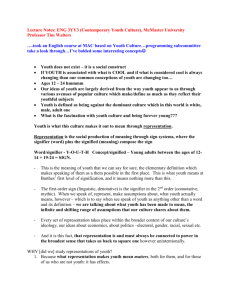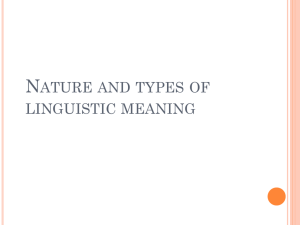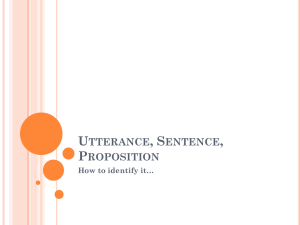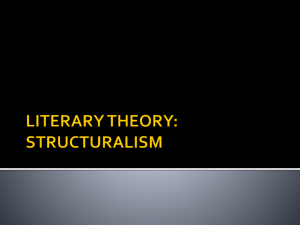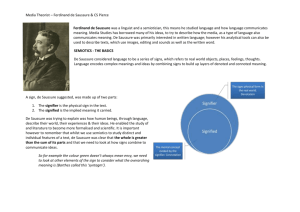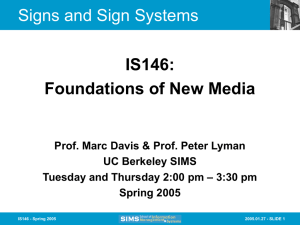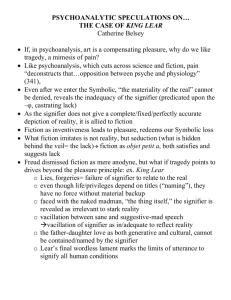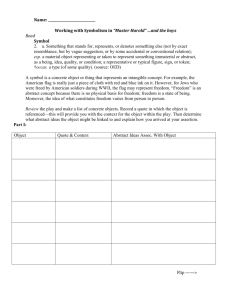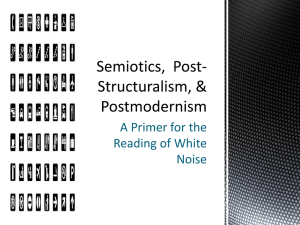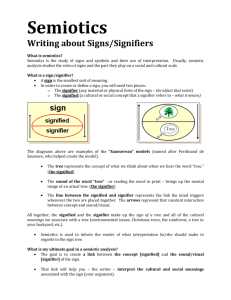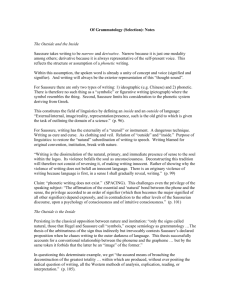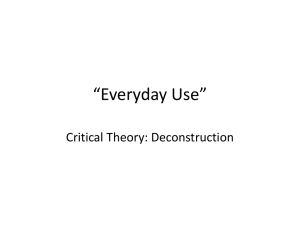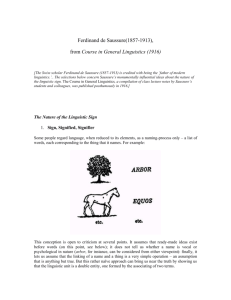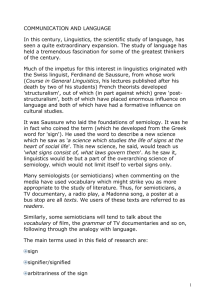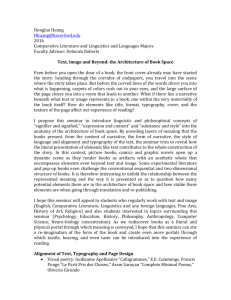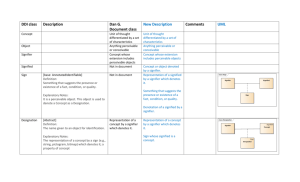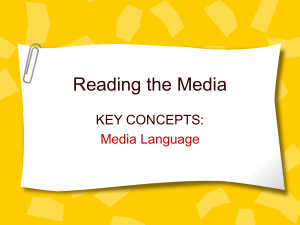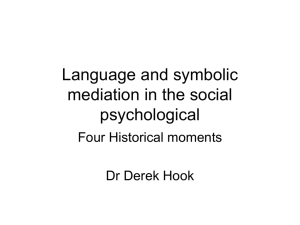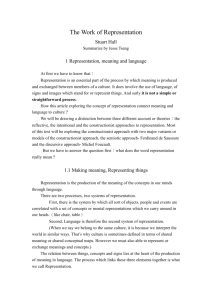Lecture 5 - WordPress.com
advertisement
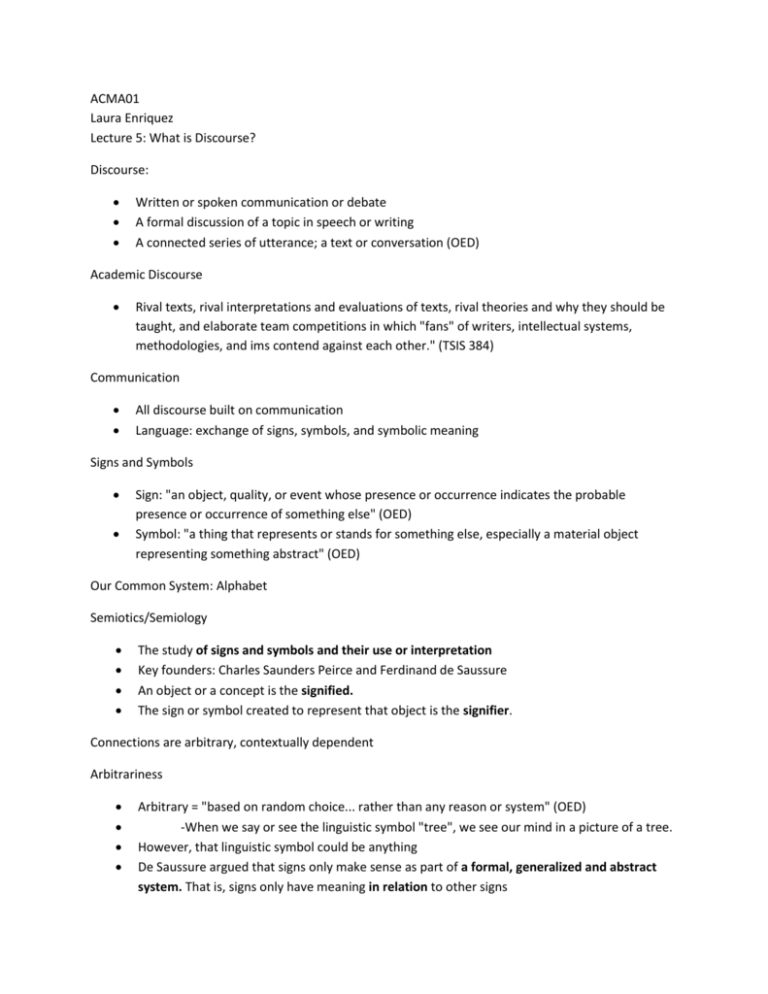
ACMA01 Laura Enriquez Lecture 5: What is Discourse? Discourse: Written or spoken communication or debate A formal discussion of a topic in speech or writing A connected series of utterance; a text or conversation (OED) Academic Discourse Rival texts, rival interpretations and evaluations of texts, rival theories and why they should be taught, and elaborate team competitions in which "fans" of writers, intellectual systems, methodologies, and ims contend against each other." (TSIS 384) Communication All discourse built on communication Language: exchange of signs, symbols, and symbolic meaning Signs and Symbols Sign: "an object, quality, or event whose presence or occurrence indicates the probable presence or occurrence of something else" (OED) Symbol: "a thing that represents or stands for something else, especially a material object representing something abstract" (OED) Our Common System: Alphabet Semiotics/Semiology The study of signs and symbols and their use or interpretation Key founders: Charles Saunders Peirce and Ferdinand de Saussure An object or a concept is the signified. The sign or symbol created to represent that object is the signifier. Connections are arbitrary, contextually dependent Arbitrariness Arbitrary = "based on random choice... rather than any reason or system" (OED) -When we say or see the linguistic symbol "tree", we see our mind in a picture of a tree. However, that linguistic symbol could be anything De Saussure argued that signs only make sense as part of a formal, generalized and abstract system. That is, signs only have meaning in relation to other signs The meaning of a sign is dependent on its social, historical, and cultural context The meaning of any individual sign is derived from the larger sign-system itself Implications (So What?) Implication #1: We can only think within the terms of the sign system. We cannot think outside it Languages are merely forms of the same content. We create meaning through representation (text, image, sound) -Meaning-making via systems -Learning rules and conventions -Likewise, we must also learn the (ideological, hegemonic) rules and conventions of visual images to understand what we see. Particularly in visual culture, specific meanings are often manufactured BMW = Status = Wealth = Power Authority= Power= Control However, such meanings are neither stable nor universal "Every verbal signification lies at the confluence of countless semantic rivers" Implication #2 There is no "transcendental signifier" Transcendental signifier: A singular, quintessential signifier that gives meaning to all signs Meaning depends on understanding one sign in relation to all other signs within the relevant system. Meaning through Absence Sign-Sets: signifiers of related, but not identical, signified objects. Example: Plants Meaning comes through presence and absence. Implication #3 All signs are imbued with ideologies and therefore carry out issues of power and representation. Example: Newspeak/Doublespeak Language intended to obscure the actual events it is describing An alternate and intentionally deceptive signifier system for common "signfieds" "Collateral Damage" A sign= a representation Sign convey authority Signs encode naturalized norms that have a quality of "taken for granted-ness" Meaning through exclusion often reinforces binary organization of people or ideas We consent to sign-systems and their meaning every day
